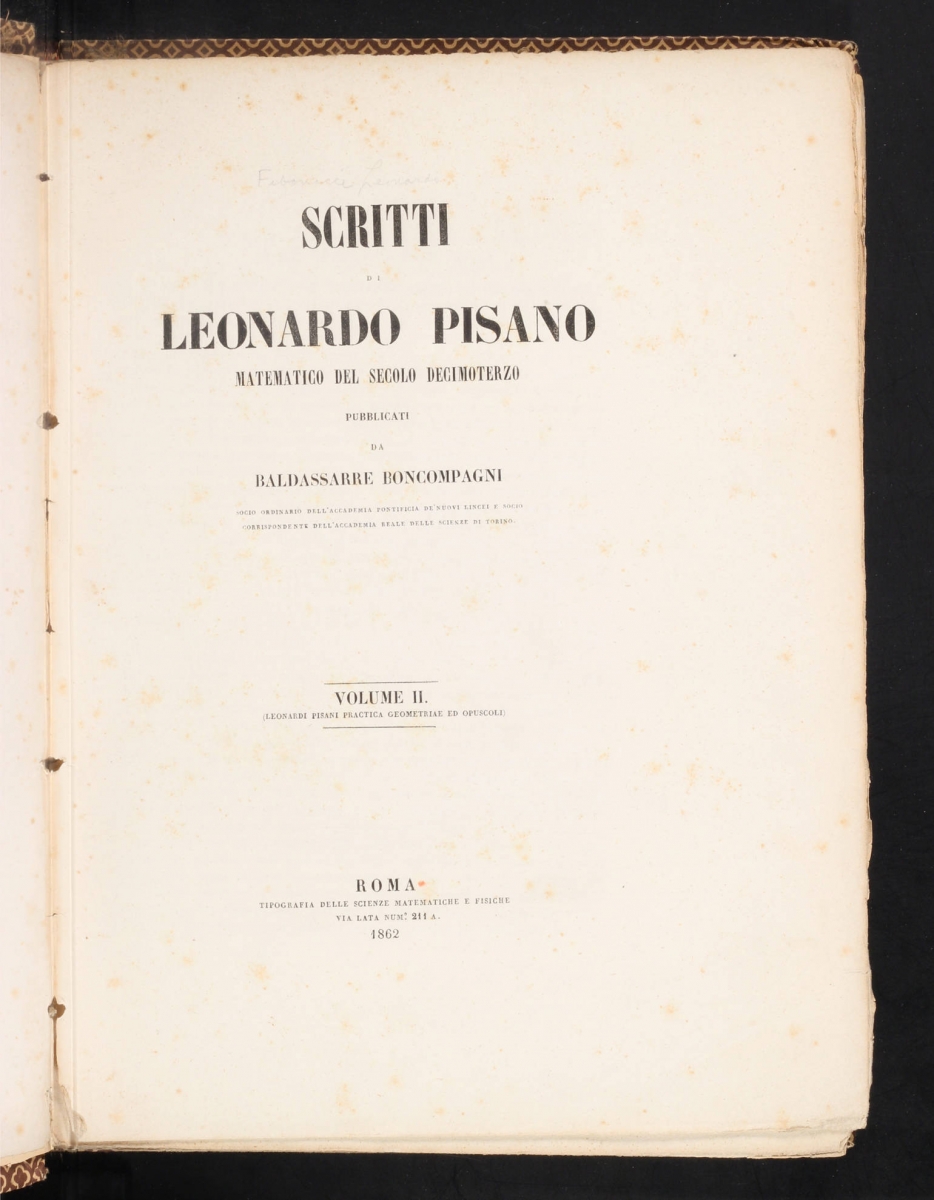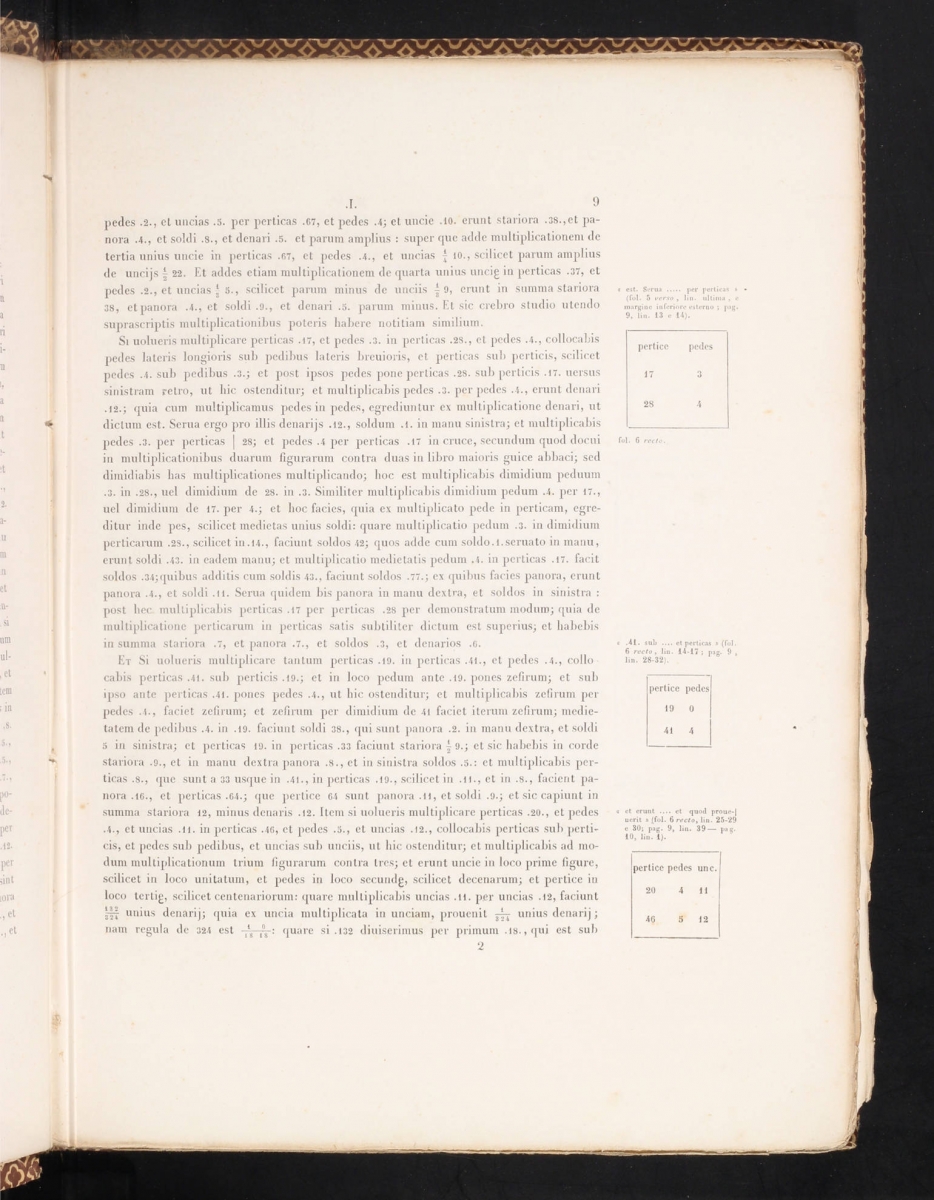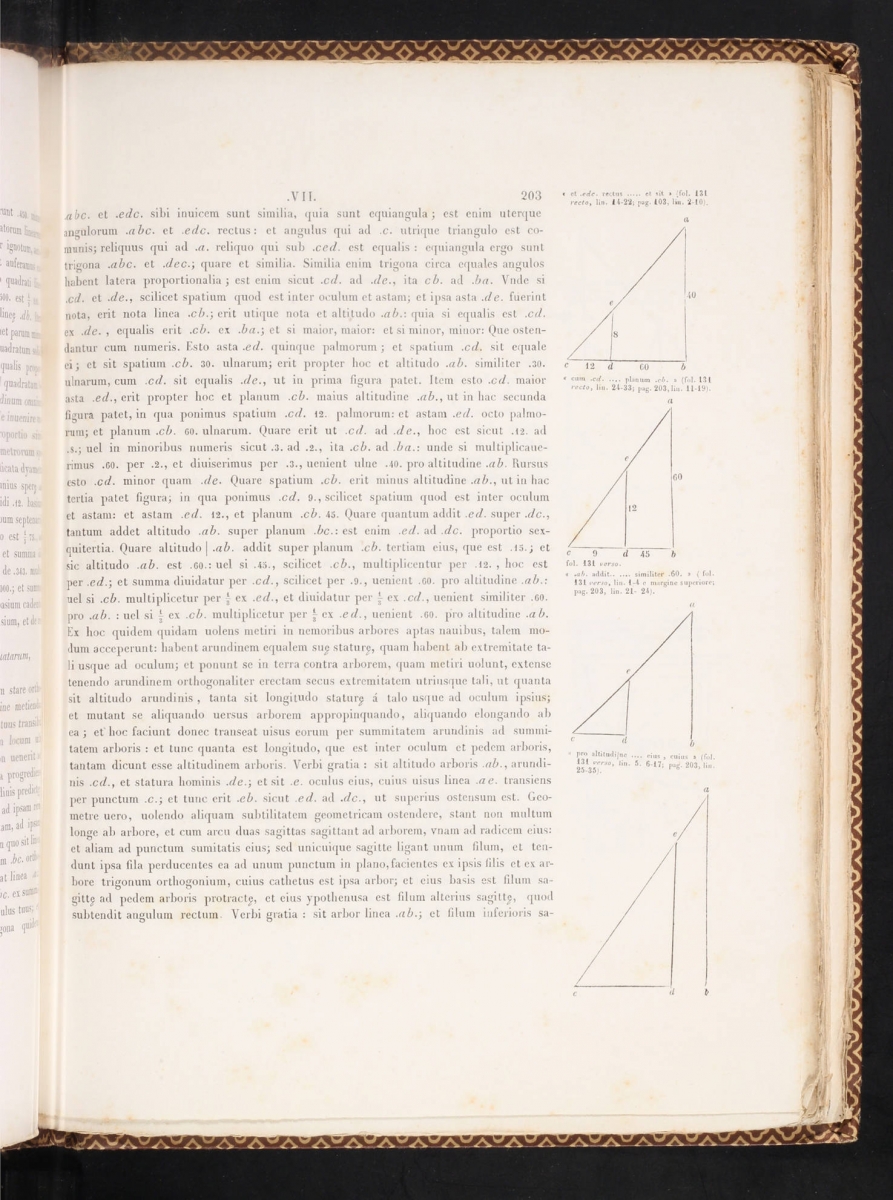- About MAA
- Membership
- MAA Publications
- Periodicals
- Blogs
- MAA Book Series
- MAA Press (an imprint of the AMS)
- MAA Notes
- MAA Reviews
- Mathematical Communication
- Information for Libraries
- Author Resources
- Advertise with MAA
- Meetings
- Competitions
- Programs
- Communities
- MAA Sections
- SIGMAA
- MAA Connect
- Students
- MAA Awards
- Awards Booklets
- Writing Awards
- Teaching Awards
- Service Awards
- Research Awards
- Lecture Awards
- Putnam Competition Individual and Team Winners
- D. E. Shaw Group AMC 8 Awards & Certificates
- Maryam Mirzakhani AMC 10 A Awards & Certificates
- Two Sigma AMC 10 B Awards & Certificates
- Jane Street AMC 12 A Awards & Certificates
- Akamai AMC 12 B Awards & Certificates
- High School Teachers
- News
You are here
Mathematical Treasure: Fibonacci’s Practica Geometriae
Leonardo of Pisa, also known as Fibonacci, is best known for introducing to Europe the Hindu-Arabic numeration system that we use today when he published Liber Abaci in 1202. He also published at least five other works; one of which was called Practica Geometriae. The Linda Hall Library has a two-volume set, published in 1857, called Scritti de Leonardo Pisano, which translates as The Writings of Leonardo Pisano. This 19th-century transcription by Baldassarre Boncompagni is the only complete collection of the surviving works of Fibonacci, and consists of the Latin text with no commentary. While Volume 1 contains Liber Abaci, Volume 2 is titled Practica Geometriae ed Opuscoli (Practical Geometry and Lesser Works). The “lesser” works are Flos, Epistola ad Magistrum Theodorum (a letter to the imperial philosopher Theodorus), and Liber Quadratorum (The Book of Squares).
There is an English translation with commentary of Practica Geometriae, primarily based on the Boncompagni edition, available from Springer. According to the Dictionary of Scientific Biography, there are 9 surviving manuscript copies of Practica Geometriae. Boncompagni used one that was in the Vatican for the Scritti de Leonardo Pisano. Barnabas Hughes, in the prequel background material to his English translation, writes, “Fibonacci wrote De practica geometriae for these artisans [surveyors], a fitting complement to Liber Abaci. Beginning with the definitions and constructions found early in Euclid’s Elements, Fibonacci instructed his reader how to compute with Pisan units of measure, find square and cube roots, determine dimensions of both rectilinear and curved surfaces and solids, work with tables for indirect measurement, and perhaps fire the imagination of builders with analyses of pentagons and decagons. His work exceeded what readers would expect for the topic, particularly with lists of units of measurement and the many practical problems that exemplify their use.” (p. xvii)
The following image is the title page of Practica Geometriae ed Opuscoli in volume 2 of Scritti de Leonardo Pisano.

Chapter 1 contains 25 solved problems and 12 theorems. It starts with problems of finding the area of rectangular fields with the dimensions given. For example, the page below has the problem of finding the area of a rectangular field that is 17 rods and 3 feet on one side and 28 rods and 4 feet on the other. There is a figure to accompany the explanation which uses the distributive law, like the FOIL method for binomial multiplication.

Below is a picture from Chapter 7, which deals with finding heights using similar triangles—which would nicely supplement secondary school geometry curriculum.

As mentioned above, there is an English translation of Practica Geometriae available, which makes it convenient for those who don’t know Latin to still study this work by Fibonacci. In fact, the author used the 19th-century Boncompagni version for his translation.
A complete digital scan of Practica Geometriae ed Opuscoli (call number QA32.F55) is available in the Linda Hall Library Digital Collections.
Images in this article are courtesy of the Linda Hall Library of Science, Engineering & Technology and used with permission. The Linda Hall Library makes available all existing digital images from its collection that are in the public domain to be used for any purpose under the terms of a Creative Commons License CC by 4.0. The Library’s preferred credit line for all use is: “Courtesy of The Linda Hall Library of Science, Engineering & Technology.”
References
Hughes, Barnabas. Fibonacci's De practica geometrie. Springer, 2008.
O'Connor, J. J., and E. F. Robertson. “Leonardo Pisano Fibonacci.” MacTutor History of Mathematics Archive. https://mathshistory.st-andrews.ac.uk/Biographies/Fibonacci/.
Vogel, Kurt. “Fibonacci, Leonardo, or Leonardo of Pisa.” In Dictionary of Scientific Biography, edited by C. C. Gillespie, iv:604–613. New York: Scribner, 1972.
Cynthia J. Huffman (Pittsburg State University), "Mathematical Treasure: Fibonacci’s Practica Geometriae," Convergence (January 2017)




